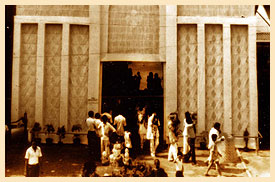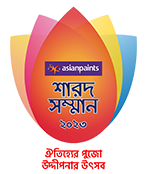Dugga Elo Ghawrey
About APSS
Asian Paints Sharad Shamman: A Cultural Kaleidoscope
Just over a century ago, twelve friends in Kolkata got together to organise the first Baroari ('baarah yaar' or 'twelve friends') Puja, that took the Durga Puja celebrations to the community at large.
Neighbourhoods (paras), clubs and local committees today contribute to about 3,700 Sarbajanin ('for all people') Puja celebrations in pandals (temporary structures that house the idols) across Kolkata. From a festival celebrated at home by the land-owning elite, the pujas have become a common man's festival.
Cut to thirty-five years ago, a seed of an idea discussed over lunch by advertising pros Derek O'Brien and Sumit Roy, and poet Subhash Mukhopadhyay, led to the instituting of the Asian Paints Sharad Shamman Awards to honour the three best pujas or Shreshtho Pujas. In time, this would also include one pandal each for Discovery of the Year (Bauchorer Bismoy), Innovative Excellence (Nobo Nakshi), and Best Idol Maker (Best Pratima Shilpi).
The awards, facilitated by Asian Paints, sought to create a renowned and reputable platform of expression for both all strata of society. Pujas started becoming more culture-conscious as Rabindrasangeet and Vedic mantras replaced Bollywood music, and traditional idols made a comeback. More importantly, it ensured that musical forms, traditional arts and crafts, and community celebrations imbibed with religious fervour, all remained intact in the face of commercialism over the years.

Adi Ballygunge – One of the three pandals to win in 1985, the first year of Asian Paints Sharad Shamman.
Interestingly, the traditional art forms evolved as the puja celebrations became more inspired and innovative. Pandal illuminations have gone from the customary Chandannagar style of tulip-shaped lights on wooden frames, to spectacular theme-based lighting that uses flashing bulbs and animation to depict current events. Another pleasing touch was the elaborate decorations devised from pristine white material known as daaker saaj - so named because it originally came via the post (or 'daak') from Europe, until it began to be manufactured locally.
